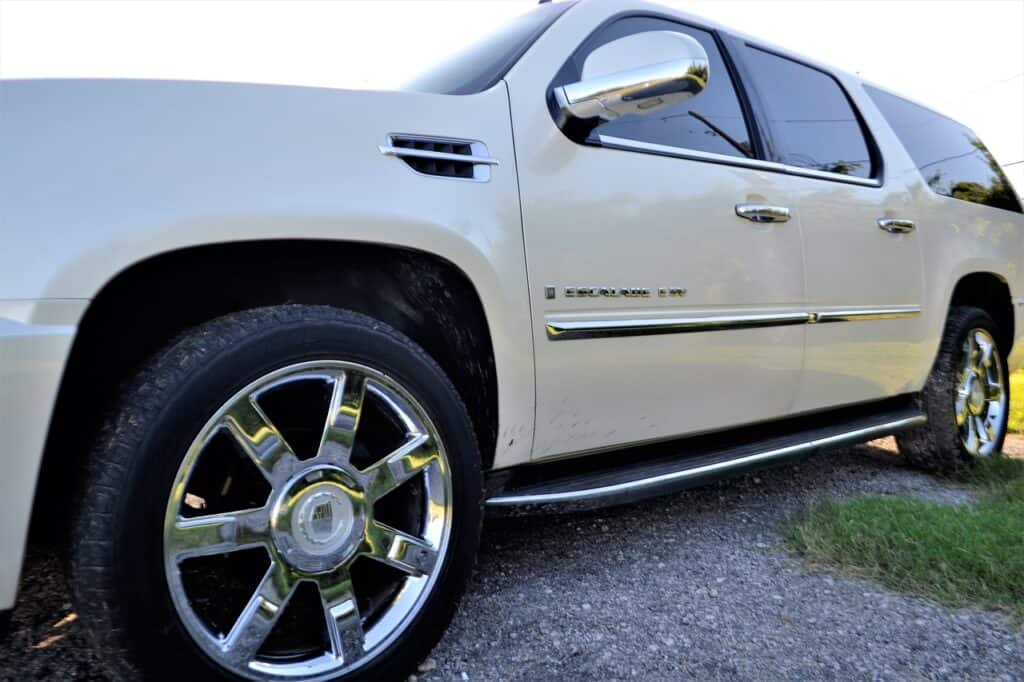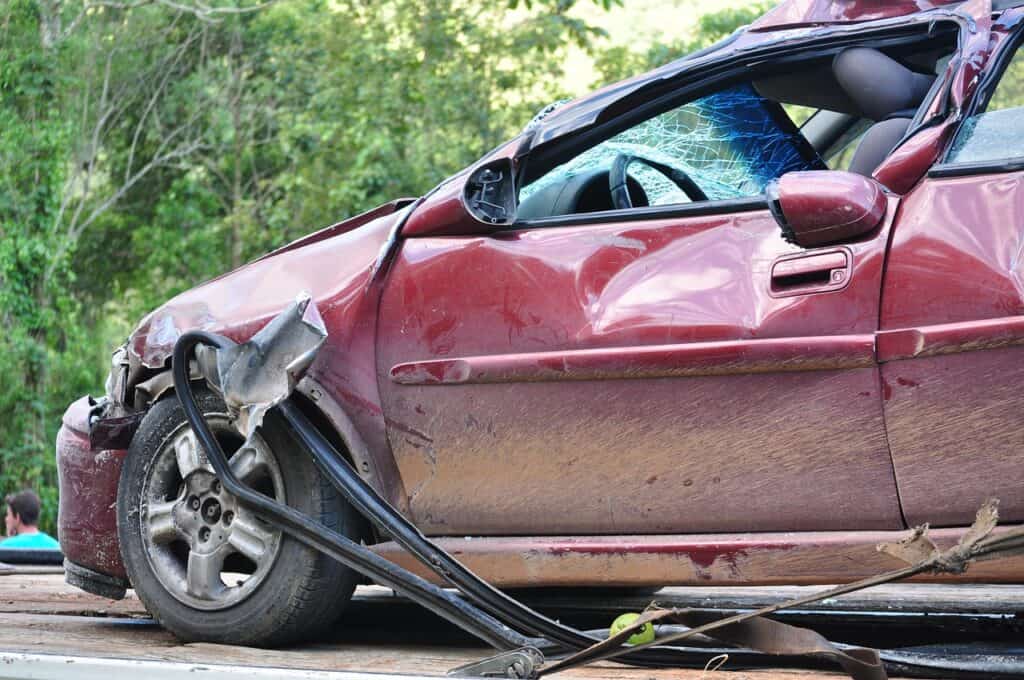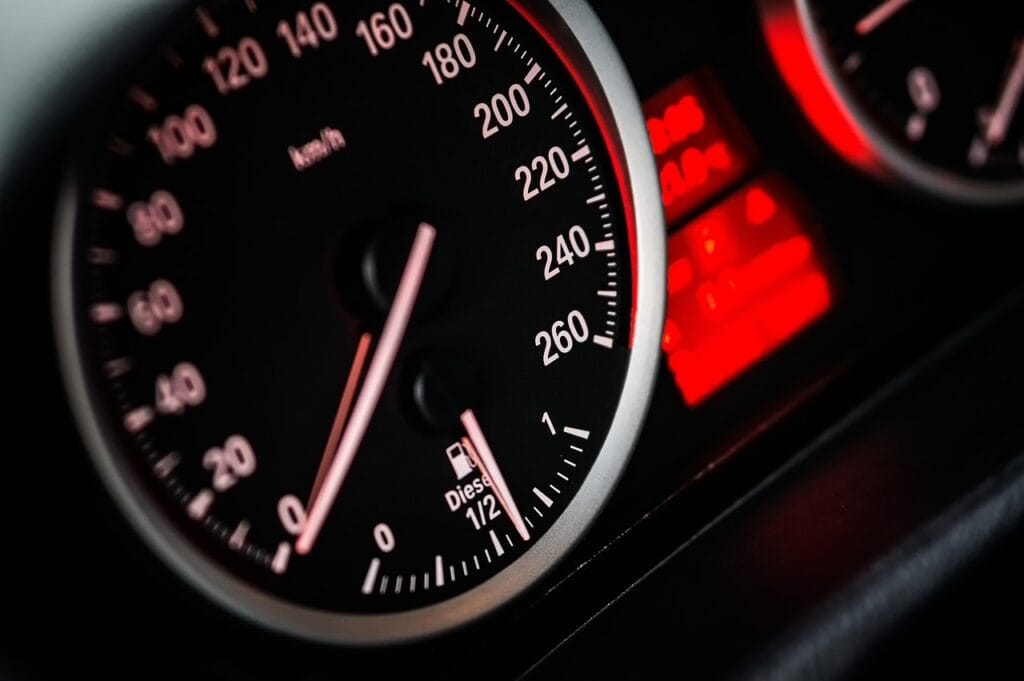Buying a car in Canada can be an easy or complicated process. There are specific steps you should take during this process to ensure this new purchase doesn’t cripple you financially.
Most personal finance websites promote using a monthly budget as a way to achieve a state of financial wellness. You’ve probably read about all the ways in which you can “cut corners” to save money.
“Make coffee at home rather than going to Tim Hortons and you’ll be able to save $8 per month.”
“Go with No Name branded food instead of PC branded food and you’ll be able to save $31 per month”
I think it’s important to understand what you value in your life, and what you don’t. From that knowledge, you’ll be able to determine which areas of your budget you can apply cuts to. Trying to save 1-2 dollars on EVERY purchase is going to wear you down very quickly, and ultimately result in you cursing a bunch and ditching your budget entirely.
Creating a monthly budget is simple. Make sure you have 10-15% of your monthly income set away for retirement, save up for future big purchases, and spend the rest on things you enjoy, like travel for example.
- Step 1 to Buying a Car in Canada: Save in Advance
- Step 2: Do the Initial Research Beforehand
- Step 3 to Buying a Car in Canada: Determine if You Want a New or a Pre-used Vehicle
- Step 4 to Buying a Car in Canada: Determine How Much You Can Pay as a Down Payment
- Step 5 to Buying a Car in Canada: Get Pre-Approved for a Loan
- Step 6 to Buying a Car in Canada: Research Your Trade-In
- Step 7: Research Your Prices
- Step 8 to Buying a Car in Canada: Test Drive the Car
- Step 9: Prepare the Necessary Documents
- Step 10 to Buying a Car in Canada: Close the Deal
- Step 11: Alter Your Budget
- Conclusion
- FAQ’s
- 4 Tips to Help You on Your Financial Wellness Journey
Stay up to Date on the Latest Travel Deals
Despite all the tricks you read about saving a few dollars here and there, you are MUCH more likely to screw up your budget by botching a life-altering purchase than spending a few extra dollars on coffee. A wrecked financial situation can really hinder your ability to travel (either with cash or with points).
Let’s talk about one of these big purchases……..buying a car.
There are a number of things to consider when buying an automobile, and purchasing a vehicle that is going to cripple you financially is something you should avoid at all costs.
Most people buy a car 5-10 times over the course of their lives, so it’s important to make sure you get this purchase right. I’ve had friends who have had auto payments of $600 per month. Imagine what you could do with an extra $600 per month!
Here are the 11 steps you’ll want to take when purchasing a vehicle. These 11 steps can act as a rough guide to buying a car in Canada.
Step 1 to Buying a Car in Canada: Save in Advance
From a financial perspective, the entire goal of this purchase should be to avoid having a car sending you into crippling debt.
With that notion, the first step in buying a car occurs years before the purchase is made.
In order to avoid crippling debt, you’ll need enough money set aside in order to put a substantial down payment on the vehicle (with the goal being 100% paid up front).
In order to do that, you’ll have to start saving months, if not years in advance.
Having a monthly budget allows you to control your monthly spending, and will easily illustrate to you what % of your monthly income needs to be set aside for your auto purchase.
For example, if you intend on purchasing a used car worth ~$20,000 three years from now and you have $0 saved thus far, simple math will tell you that you will need to save $555 per month to pay 100% upfront.
As you can see, saving can be tough to do. Most people don’t have $500 lying around at the end of every month.
The lesson here is to plan in advance. The longer you are saving, the easier it will be to make the full downpayment
Read: The Best Budgeting Methods for Canadians
Read: Your Complete Guide to TFSA’s
Step 2: Do the Initial Research Beforehand
Walking into an auto dealership and yelling “I’d like to buy a car now” is not a good financial move.
If you don’t know what you want, you are more susceptible to the unnecessary bells and whistles that come with certain automobiles. There’s also a risk of the sales rep taking advantage of this and directing you to a vehicle that is out of your price range.
There are a few things you’ll want to know prior to walking into the dealership:
- What is the purpose of the vehicle – Will you be driving kids around? Is this a work vehicle? Will you be spending a lot of time on a highway? These are just a few of the questions you’ll need to ask yourself.
- What’s important to you – certain features such as carbon emissions and safety features should be taken into consideration beforehand.
Here are a few resources you can use for research purposes
Step 3 to Buying a Car in Canada: Determine if You Want a New or a Pre-used Vehicle
This is one of the biggest decisions you’ll have to make during the car buying purchase.
Going the new car route obviously provides a bit more security in terms of the limited warranty, but financially speaking, new cars drastically depreciate in value once driven off the lot.
| New Car | Used Car |
| Positive – Sometimes you get corporate sales & discounts for new vehicle vehicle purchases. “Employee pricing” is one of the more common ones you will see | Positive – You have more opportunity for cost savings and better value in the used market |
| Positive – New cars will offer a warranty up to a certain number of miles, providing you with some financial security | Positive – Used cars don’t depreciate as much compared to new cars |
| Negative – New cars depreciate in value……fast | Negative – Extended warranties will cost extra. Services are typically not included when purchasing a used car. |
| Negative – New cars are more likely to be subject to recalls compared to cars that have been in circulation for a few years | Negative – Increased maintenance costs may be required for used vehicles |

Financially speaking, you are much better off buying a used car, even in 2023, when the prices of used cars have risen. Yes, you may need to purchase an extended warranty on the vehicle, but that cost is minimal compared to the level of depreciation that exists with a new car.
Step 4 to Buying a Car in Canada: Determine How Much You Can Pay as a Down Payment
To reiterate, the one thing to keep in mind when buying a car is that…………..debt is bad.
I’ve personally been in the position where I’ve been all smiles leaving the dealership with my brand new pre-owned vehicle, only to have $500 in payments start funneling out of my bank account a month later.
Could I have been better off to wait a year and pay for the entire vehicle up front…..probably.
Could I have checked my ego at the door, and bought a vehicle with fewer bells & whistles…..definitely (I barely even use my seat warmer if we’re being honest).
One of the most important steps to achieving a state of financial freedom is to avoid debt at all costs. If you can pay for the vehicle upfront, do it. Likewise, if you can wait until you have saved enough money to pay for 100% of the vehicle, you’re better off waiting.
If you are in a position where you can only pay for a portion of the car, try to spend up to the maximum amount you can, without having to dip into your retirement savings or your emergency fund.
In the instance you leave the dealership with a monthly payment, all attention should be focused on paying off that loan as soon as possible. We want to avoid giving money to banks wherever possible.
Please read: How to get out of debt
Step 5 to Buying a Car in Canada: Get Pre-Approved for a Loan
If you intend on taking on an auto loan, you will need to get pre-approved for a loan from your bank or financial institution (in some cases).
This is obviously a step that can be skipped if you’re paying for the car in full.
If your credit is 700 and above, this is also something that you don’t necessarily need to be concerned with.
However, if you have a credit score of below 700 and you intend on taking on a considerable car loan, you will want to first visit your bank, and find out how much they’re willing to loan you.
Warning: There are online services that claim they’ll approve your credit request regardless of your credit score. While this may be true, the interest rates associated with these programs can be crippling financially.
You would be much better off spending 6-9 months focusing on drastically increasing your credit score, and then returning to the bank asking for a loan.

Tracking Your Credit Score
There are a number of companies in the market that allow you to track your credit score. Some are paid, some are free.
I’ve personally used free services, along with paid services. I find the difference between the two to be negligible, and I’ve had difficulty stopping recurring payments with a few of the paid services, so right now I’m using CreditKarma to check my credit score.
CreditKarma allows you to check your credit score on a weekly basis free of charge.
Free of charge…….
CreditKarma will take your personal information, but it is as secure as any platform, so you shouldn’t worry about cyber risk.
Another thing to note about CreditKarma is that it only performs “soft” credit checks, meaning that any inquiry performed by CreditKarma will not negatively impact your credit score (hard inquiries performed by financial institutions will negatively impact your credit score for a short period of time).
CreditKarma also provides its users with the following benefits:
- A graph showing your credit score over time
- How your credit score compare to others by age, income, and state
- A credit report card that shows you how certain factors—like your payment history and debt utilization—impact your credit score
- Tools to let you simulate how paying down debt or applying for new credit will change your score
Alternatively, you could use Borrowell
Step 6 to Buying a Car in Canada: Research Your Trade-In
If you currently own a vehicle and are planning to trade it in, it is important to understand the value of the vehicle so you’re not taken advantage of by the dealership.
There are a number of online tools such as InstantAppraisal and Carfax that can help get this process started for you
Step 7: Research Your Prices
Once again, you want to be in a position where a car salesman or dealership won’t take advantage of you.
If you’re buying a new vehicle, don’t hesitate to visit multiple dealerships and see if anyone is willing to budge on the price (also keep an eye out for discounts throughout the year).
If you’re buying a pre-owned vehicle, you can research auto prices on websites like AutoTrader to determine the cost of your soon-to-be vehicle. I found my make and model $5,000 cheaper at a dealership that was 4 hours away. I was able to leverage this to get my local dealership to lower their costs.
You may also find your car on Kijiji or Craigslist for cheaper than an auto dealership. While we’re not deterring you from going that route, there is naturally some inherent risk in buying a vehicle without knowing its full history.
Step 8 to Buying a Car in Canada: Test Drive the Car
This goes without saying, but you will want to test drive the car to determine if you see yourself behind the wheel for the next 5 years.
There are a couple of steps you’ll want to take beforehand including:
- Emailing the dealership, ensuring that your car is still available (it may have sold)
- Setting up an appointment for the test drive (you’re too busy to wait around in the waiting room)
- Having a list of questions you want to ask
Step 9: Prepare the Necessary Documents
There are a few documents you’ll need to start preparing in order to finalize the transaction:
- Drivers License
- Auto insurance
You DO NOT need to get auto insurance before purchasing your vehicle (you can complete the sale of the vehicle before any insurance has been finalized).
You will be able to use the auto insurance associated with your previous vehicle for about a week after purchasing your new vehicle. At this time, you’ll need to register your new vehicle with the government, and in order to do that, you’ll need an updated insurance policy.

There are two different types of insurance in Canada. Taken directly from RateHub.ca
Public Car Insurance
The British Columbia, Manitoba and Saskatchewan governments each run a public insurance system. Every resident in these provinces needs to purchase their basic car insurance from a Crown Corporation. The base policies typically include the minimum third-party liability ($200,000 in those three provinces) and accident benefits that compensate you if you’re injured. For further insurance coverage, residents of these provinces can purchase add-ons through the public insurance system or through a private car insurance company – typically, whichever offers the best car insurance rate.
Private Car Insurance
Car insurance in Ontario, Alberta, Atlantic Canada and the territories offer private car insurance solutions. The advantage is residents can compare the best car insurance rates for their entire policy, compared to those in provinces with public car insurance systems. However, when looking at the cheapest car insurance provinces, while BC is the most expensive, Ontario is right behind them.
Quebec runs on a hybrid system, which is part public, part private. Its public insurance system offers drivers accident benefits (compensates you if you’re injured), but not third-party liability. For all additional coverage, drivers need to purchase private car insurance.
If you are purchasing private auto insurance, you are going to want to do some homework. Obtain roughly 2-3 quotes from different providers.
Combining your home and auto insurance so they are with the same provider may lead to some financial savings on both policies.
Some auto dealerships will also offer some form of insurance (usually through a partner). However, you will most likely find a better deal elsewhere.
Step 10 to Buying a Car in Canada: Close the Deal
Assuming that there are no dealerships in the area offering the same car for less, and assuming the test drive went great, you are now in a position to pull the trigger on your new vehicle.
While the price should have been negotiated by now, there are a few other pricing components that will come up at the point of sale. Extended Warranty, Paint Protection and a number of other add-ons will most likely be brought up by the dealership.
Whether you decide on going with these purchases should all depend on your level of risk. It also should be noted that many of the services offered by the dealership are negotiable.
Once the add-ons have been spoken about, you’ll have to put pen to paper. As with any agreement, you’ll want to take a read through to make sure the numbers in the contract match what you’ve discussed.
Step 11: Alter Your Budget
Upon leaving the dealership with your brand-new car, you’ll naturally feel a great deal of excitement. However, the monthly payments will start within days of the purchase, and you will need to alter your monthly budget to accommodate these changes.
This step shouldn’t take more than a few minutes, but it is something you don’t want to overlook.
Conclusion
Buying a car in Canada can be a simple process, but it can wreck your finances if you don’t take the necessary steps mentioned above.
The one takeaway is that you don’t want to leave the dealership with a pile of debt.
A car payment can deter you from saving for things you enjoy, and living your best life.
FAQ’s
What is the most cost-effective way to purchase a vehicle?
Given the depreciating value of new cars, the most “cost-effective” way to buy a car is to purchase a used vehicle with a minimal car loan. Yes, your car will depreciate in value, but not as much when compared to a new car.
Avoiding the car loan will ensure your money stays in your pocket
What time of year should I purchase a vehicle?
More people purchase cars during the summer, which naturally leads to more sales happening outside of those months. From October to December there tend to be sales on outgoing models which may benefit you financially.
4 Tips to Help You on Your Financial Wellness Journey
- Have a monthly budget, and have an idea as to how much you’ll need to set aside to put a large down payment on the vehicle. This should be done well in advance of your purchase
- Keep your credit score high in order to reduce your interest rate should you have to take on a car loan. This should also be tracked well before your purchase
- Once you’ve locked in on a vehicle, make sure you visit multiple dealerships to ensure you get the best rate
- Likewise, with your auto insurance, shop around to get a few different quotes
Disclaimer: this post may contain affiliate links, meaning we get a small commission if you make a purchase through our links, at no cost to you. For more information, please visit our disclaimer page

